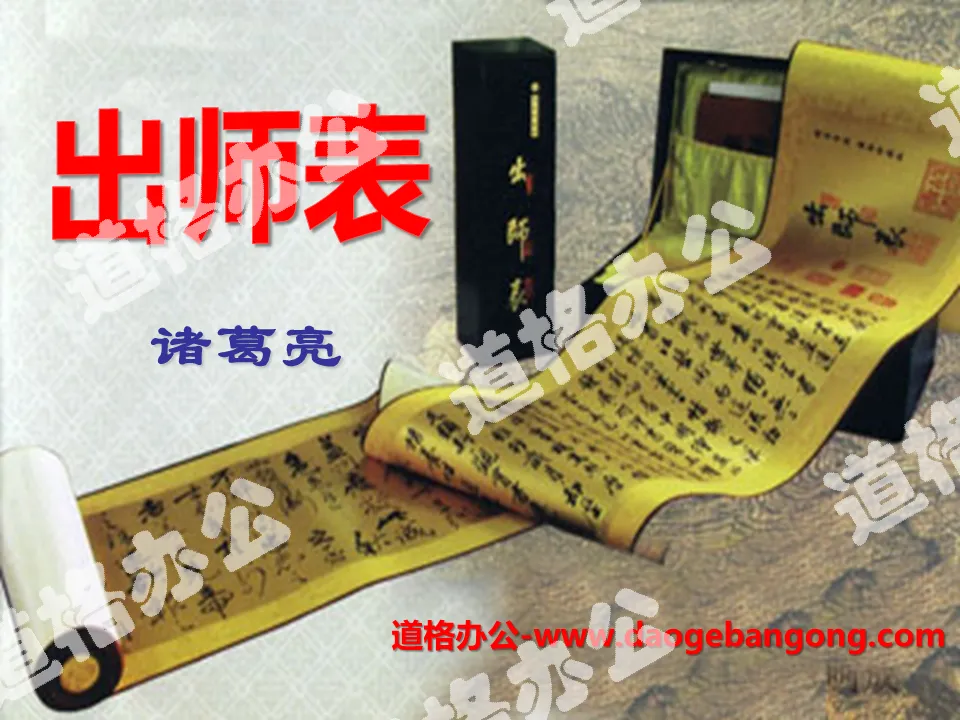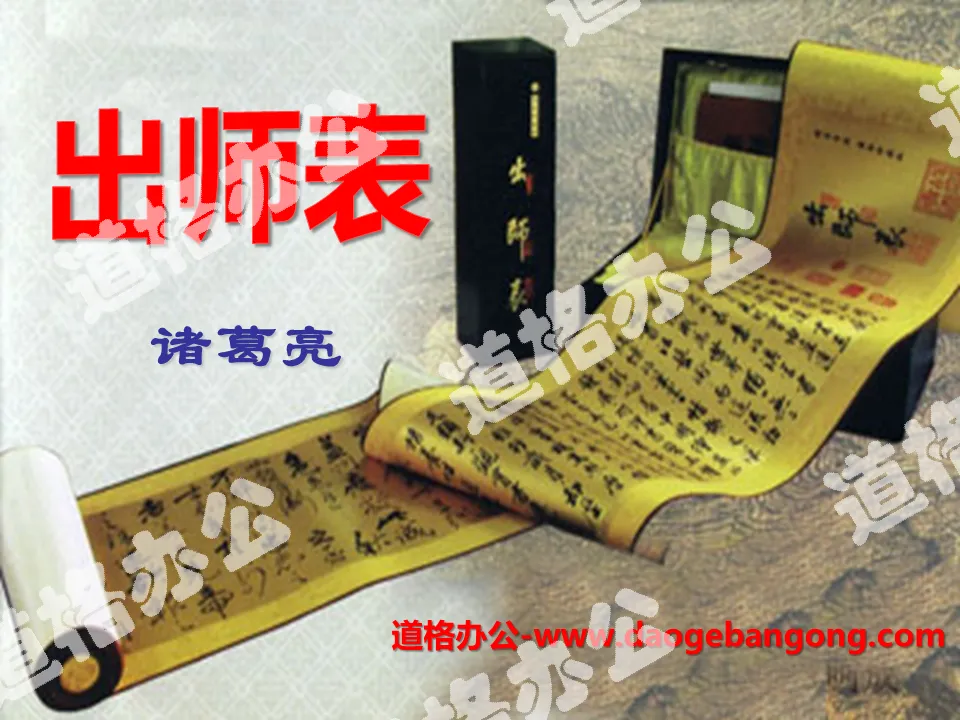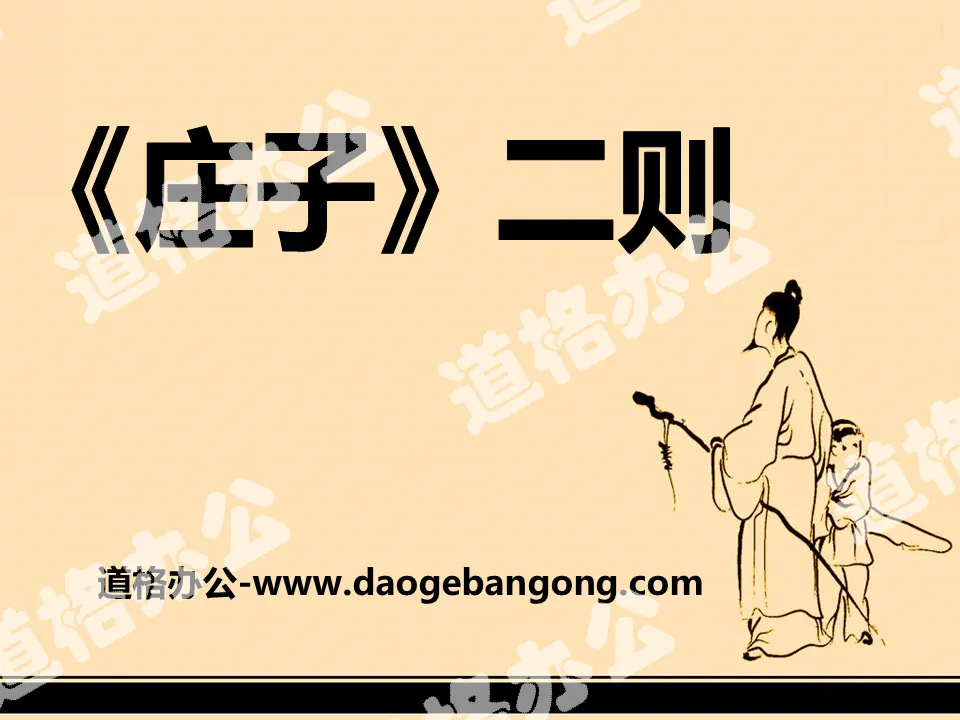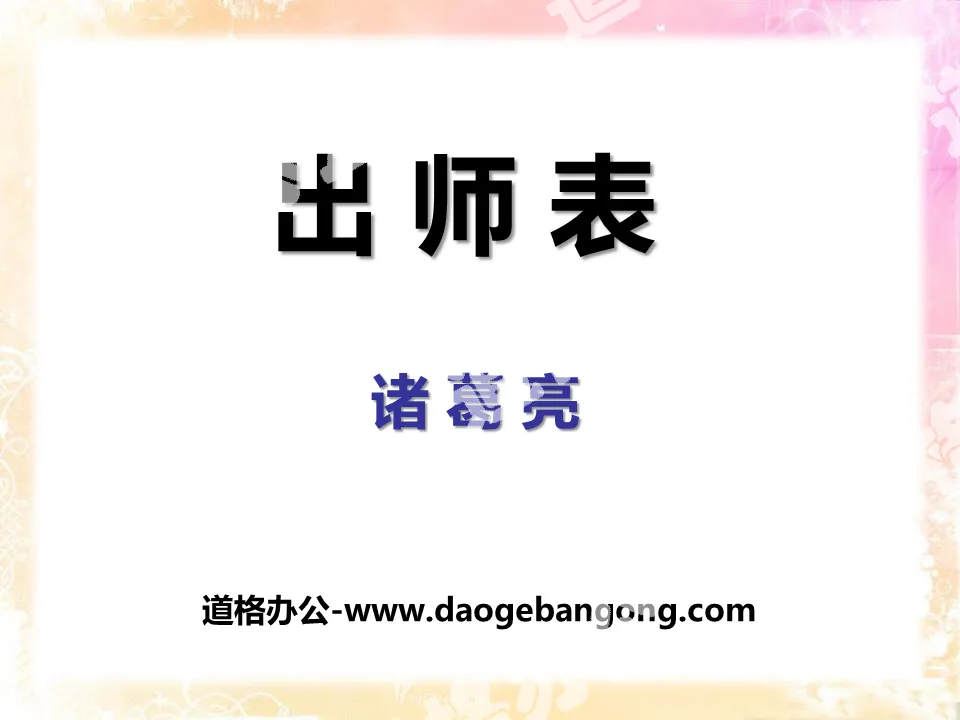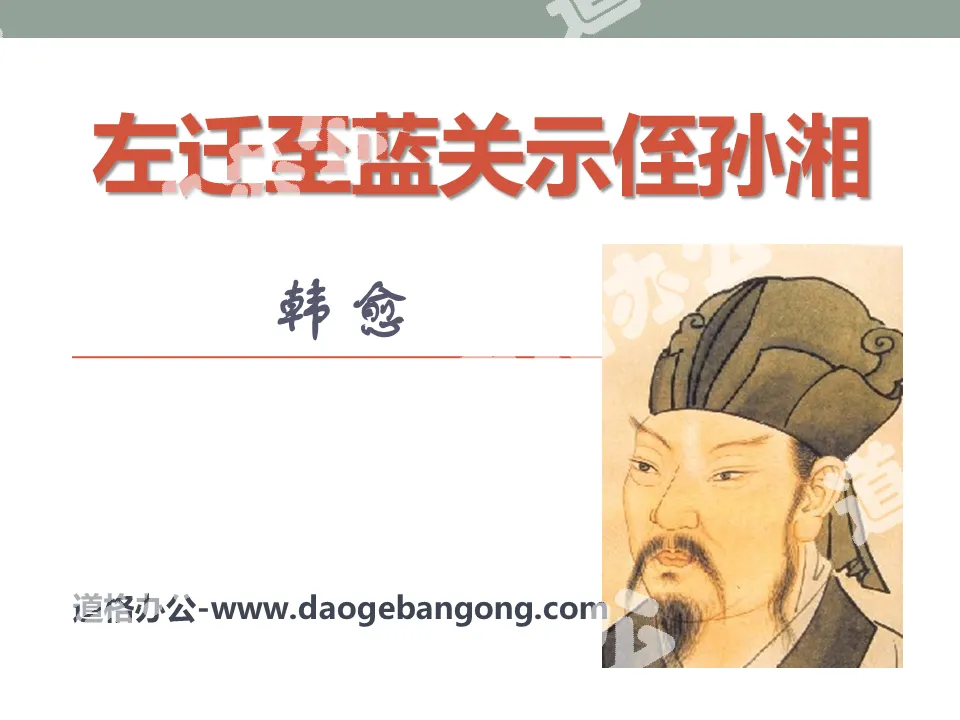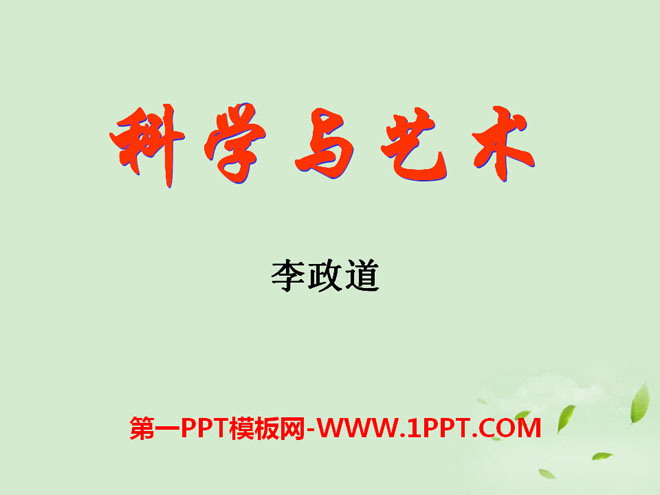
| Category | Format | Size |
|---|---|---|
| Chinese version Ninth grade Chinese language volume 2 | pptx | 6 MB |
Description
"Science and Art" PPT courseware 2
Academician Li Zhengdao is a professor at Columbia University, an internationally renowned physicist, a Nobel Prize winner, an academician of the National Academy of Sciences, a foreign academician of the Chinese Academy of Sciences, an academician of Academia Sinica, and an academician of the Italian Academy of Sciences (Academia Lincei).
Ancestral home: Suzhou City, Jiangsu Province. Born in Shanghai in 1926. During the Anti-Japanese War, he studied at Zhejiang University and Southwest Associated University.
In 1946, he went to the University of Chicago in the United States to study for a doctorate, studying under Professor Fermi, a master of physics. He and Professor Chen-Ning Yang shared the 1957 Nobel Prize in Physics for their discovery of parity non-conservation. Professor Li Zhengdao has been active at the forefront of physics and has made many outstanding achievements in physics.
Professor Li Zhengdao has won: Nobel Prize in Physics (1957), Einstein Science Prize (1957), Boudeur Medal of the French National Academy (1969, 1977), Galileo Galilei Medal (1979), the Supreme Medal of the Republic of Italy Knight of the Order of Merit (1986), E. Manorina Erich Science Peace Prize (1994), etc.
Article background
At the 2004 Shanghai Science and Art Exhibition, Li Zhengdao gave a speech on "Science and Art". He quoted from many sources, from Li Bai's "Wine to the Moon" and Su Shi's "Water Melody Songtou" to Michelson and Morey's 1887 light speed experiment, Planck's 1900 discovery of the blackbody radiation formula; from the symmetry and harmony of science and art From the expression of asymmetry to Euclidean and non-Euclidean space, superstring theory, etc., it provides a wonderful explanation of the relationship between science and art.
Memorize new words
Explain (chǎn): explain clearly.
婵(chán):
1. The posture is beautiful, such as: cicada.
2. Refers to the moon, this article adopts this meaning.
Diàn:
1. lay; establish.
2. Offer sacrifices to the deceased.
Spoke (fú): The straight stick in the wheel that connects the hub and rim.
word recognition
Consciousness: The reflection of the human mind on the objective material world is the sum of various psychological processes such as feeling and thinking, among which thinking is an advanced form unique to human beings that reflects reality.
Subconscious: Also known as the subconscious mind. In psychology, it refers to unconscious and unconscious psychological activities, which are the organism's instinctive response to external stimuli.
Abstraction: Abandoning individual, non-essential attributes from many things and extracting common, essential attributes is called abstraction. It is a necessary means to form concepts.
Laws of nature: A generalization of certain objective laws by natural science, reflecting the inevitable relationship of a certain change process in things under certain conditions.
Preview effect feedback
1. What are the three elements of an argumentative essay?
An argumentative essay contains three elements: argument, argument, and demonstration. The argument is the point of view to be discussed and expounded in the article, and it is the opinion and proposition that the author wants to express. When reading an argumentative essay, the first thing is to find, extract and understand the argument of the article.
2. What issue does this article discuss?
It discusses the relationship between science and art.
3. What are the similarities between science and art?
The common foundation of art and science is human creativity, and the goals they pursue are the universality of truth.
4. What is the argument of this article?
The common foundation of art and science is human creativity, and the goals they pursue are the universality of truth.
paragraph level
The first part (1-2) gets straight to the point and puts forward the argument.
The second part (3-12) specifically demonstrates the argument.
① Paragraphs 2 to 6: Talk about the "creativity" of art and the "universality of truth."
② Paragraphs 7 to 10: Talk about the "creativity" of science and the "universality of truth."
The third part (13) discusses the similarities and differences between science and art in terms of "universality" and emotional intelligence.
Question discussion:
1. Find sentences that point out the "creativity" of art and "the universality of truth" and talk about how to understand them.
2. What are the "creativity" and "universality" of science? How to understand them.
3. Find out the "differences" between science and art in terms of "universality" and their relationship.
4. "The relationship between science and art is closely related to the duality of wisdom and emotion."
writing traits
Expression method: There is a certain explanation in the discussion, which is the most prominent expression method in this article.
Use of words: Rigorous logical reasoning, accurate and scientific explanations make this article plain, accurate and rigorous in the use of words.
Central expression: Science and art are two categories with opposite ideologies. The author has unique insight and super academic ability. He talked about the two major similarities between art and science. The common foundation is human creativity, and the goals pursued are truth. universality. Concrete arguments were made around this center.
Memorize knowledge and take notes in class
1. People have joys and sorrows, separations and reunions, and the moon waxes and wanes. This matter is difficult to solve in ancient times. I hope that people will live forever and share the beauty of the cicadas thousands of miles apart.
2. The more precious the emotion, the more universal the response, the broader the scope across time, space and society, and the better the art.
3. Although the existence of natural phenomena does not depend on scientists, the abstraction and summary of natural phenomena is artificial and belongs to the crystallization of human wisdom, which is the same as the creation of artists.
4. Common knowledge of literature (style): Li Zhengdao, Chinese-American, famous physicist, Nobel Prize winner, "Science and Art" is selected from "Prose".
Extend and expand
Observe life carefully and find examples of the combination of science and art. (For example: "Everyone can do tricks differently." Acrobatics, magic, and sleight of hand contain a lot of knowledge of physics, chemistry, and psychology.)
Keywords: Science and Art teaching courseware, Chinese version of ninth-grade Chinese courseware volume 2, ninth-grade Chinese slide courseware download, science and art PPT courseware download, .ppt format
For more information about the "Science and Art" PPT courseware, please click the Science and Art ppt tag.
"Science and Art" PPT:
"Science and Art" PPT Part One Content: Learning Objectives 1. Understand the content of the text and recognize the similarities between science and art. 2. Understand the use and function of illustrations in the text. 3. Cultivate the creative spirit and improve creativity. New lesson introduction: Ancient Chinese unearthed in modern times...
"Science and Art" PPT courseware:
"Science and Art" PPT courseware Li Zhengdao was born in Shanghai in 1926. From the autumn of 1943 to 1946, he studied at Zhejiang University and Southwest Associated University, and then went to the College of Chicago in the United States, where he received his doctorate in 1950. He served as a professor at the Institute for Advanced Study in Princeton, USA...
File Info
Update Time: 2024-07-04
This template belongs to Chinese courseware Chinese version Ninth grade Chinese language volume 2 industry PPT template
"Science and Art" PPT courseware 2 Simple campus recruitment activity planning plan summary enterprise and institution recruitment publicity lecture PPT template is a general PPT template for business post competition provided by the manuscript PPT, simple campus recruitment activity planning plan summary enterprise and institution recruitment promotion Lecture PPT template, you can edit and modify the text and pictures in the source file by downloading the source file. If you want more exquisite business PPT templates, you can come to grid resource. Doug resource PPT, massive PPT template slide material download, we only make high-quality PPT templates!
Tips: If you open the template and feel that it is not suitable for all your needs, you can search for related content "Science and Art" PPT courseware 2 is enough.
How to use the Windows system template
Directly decompress the file and use it with office or wps
How to use the Mac system template
Directly decompress the file and use it Office or wps can be used
Related reading
For more detailed PPT-related tutorials and font tutorials, you can view: Click to see
How to create a high-quality technological sense PPT? 4 ways to share the bottom of the box
Notice
Do not download in WeChat, Zhihu, QQ, built-in browsers, please use mobile browsers to download! If you are a mobile phone user, please download it on your computer!
1. The manuscript PPT is only for study and reference, please delete it 24 hours after downloading.
2. If the resource involves your legitimate rights and interests, delete it immediately.
3. Contact information: service@daogebangong.com
"Science and Art" PPT courseware 2, due to usage restrictions, it is only for personal study and reference use. For commercial use, please go to the relevant official website for authorization.
(Personal non-commercial use refers to the use of this font to complete the display of personal works, including but not limited to the design of personal papers, resumes, etc.)
Preview





